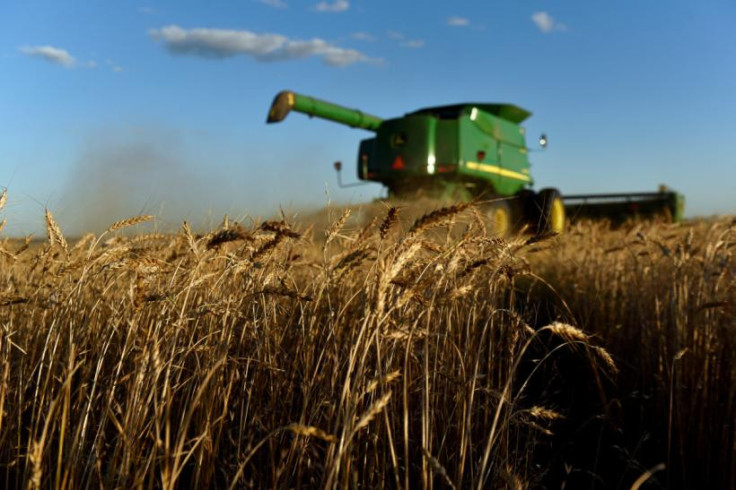AI-enabled farm wildlife monitoring could take UK towards sustainable food production
Scientists are deploying an AI-enabled farm wildlife monitoring strategy to understand the effect of agri-environment schemes in reducing emissions at farms by increasing biodiversity.

Farming and agriculture in the UK are likely to see some major changes in the near future as the country opens up to the use of AI in this sector.
This was demonstrated recently by scientists from the UK Centre for Ecology & Hydrology (UKCEH) when they used automated wildlife sensors and artificial intelligence (AI) to monitor the impact of farming biodiversity for the initial steps of a four-year study.
This comes at a time when the UK government has called for sustainable agriculture for global food security in a recent G20 meet.
Key areas to be monitored for sustainable food production
In the next four years, scientists will be using AI and automated wildlife sensors to measure the effectiveness of peatland restoration schemes and other such agri-environment methods employed to improve farming biodiversity.
- UKCEH is planning to use solar-powered biodiversity monitoring stations for this purpose. These monitoring stations will have features like acoustic recording equipment and camera traps that can detect the presence of birds, reptiles, frogs, bats, insects and various other smaller animals found on farms.
- The stations will also help in adopting eco-friendly farming practices like wildflower hay meadows and agroforestry which can reduce emissions by supporting wildlife and increasing the carbon capture at farms.
- These stations will primarily operate in farming areas where there is little to no agri-environment measures. They will help in measuring the effectiveness of the farming schemes on different species and their populations.
- Some of these stations will be installed in peatland areas to understand and compare different species populations in farms as they are affected by agriculture.
- They will also monitor the impacts of rewetted sites lying close to the farms where wetland habitats have been created to support biodiversity and absorb carbon dioxide.
- As per the department's strategy, once these wildlife sensors start working, the next stage is to use Artificial Intelligence software for the identification of species. The AI software will scan and identify the species from recording calls and photographs.
This four-year study to use AI for monitoring farm biodiversity is part of the UKCEH five-year research programme called AgZero+. This programme will support the UK government's aim to make domestic food production more sustainable and carbon neutral. It will also play a key role in fulfilling the UK government's net zero ambitions.
Farm wildlife monitoring to reduce emissions
Speaking about the matter, Professor Richard Pywell of UKCEH, revealed how this farm wildlife monitoring study will fulfil the institute's objective of advocating the use of some agricultural land on farms for biodiversity in order to increase crop yield and reduce carbon emissions.
Professor Pywell highlighted how an increase in agriculture across the UK is causing a sharp decline in insects, birds and mammals.
With the help of the latest technology and Artificial Intelligence, scientists will be able to monitor species at farms that have different crop and land management practices. This will help in demonstrating how new improved farming techniques and agri-environment measures are affecting the biodiversity at farms, said Professor Pywell.
According to the scientists, this monitoring will provide the scientific evidence required to build sustainable policies and practices for land management. This can aid in mitigating climate change and enhance crop production.
The AI-enabled farm wildlife monitoring process
At the initial stage, the scientists set up automated stations with lighting that attracted months and captured their images through high-resolution cameras. Then the months were identified by artificial intelligence.
This was done on 10 sites over the summer and each site had two stations. Scientists are planning to conduct the study in four pairs of farms in Northamptonshire, Wiltshire, Oxfordshire and Dorset. Here they will compare the agri-environment schemes. Two peatland sites are also selected in Cambridgeshire to compare the farmed and restored peatland.
Since months and caterpillars are the basis of the food pyramid of the farm ecosystem where many animals consume them as food, they are an important indicator of biodiversity. Also, they act as pollinators for flowers. The scientists are also planning to use acoustic equipment to record birds, bats, amphibians and other small animals from next year which would be later identified by Artificial Intelligence.
The automated monitoring stations will be redeployed to many more sites in the country every year between March and October in the next three years. Although the findings of the study will be published by UKCEH only after four years, the preliminary data would be made available in the meantime for better policymaking.
© Copyright IBTimes 2024. All rights reserved.






